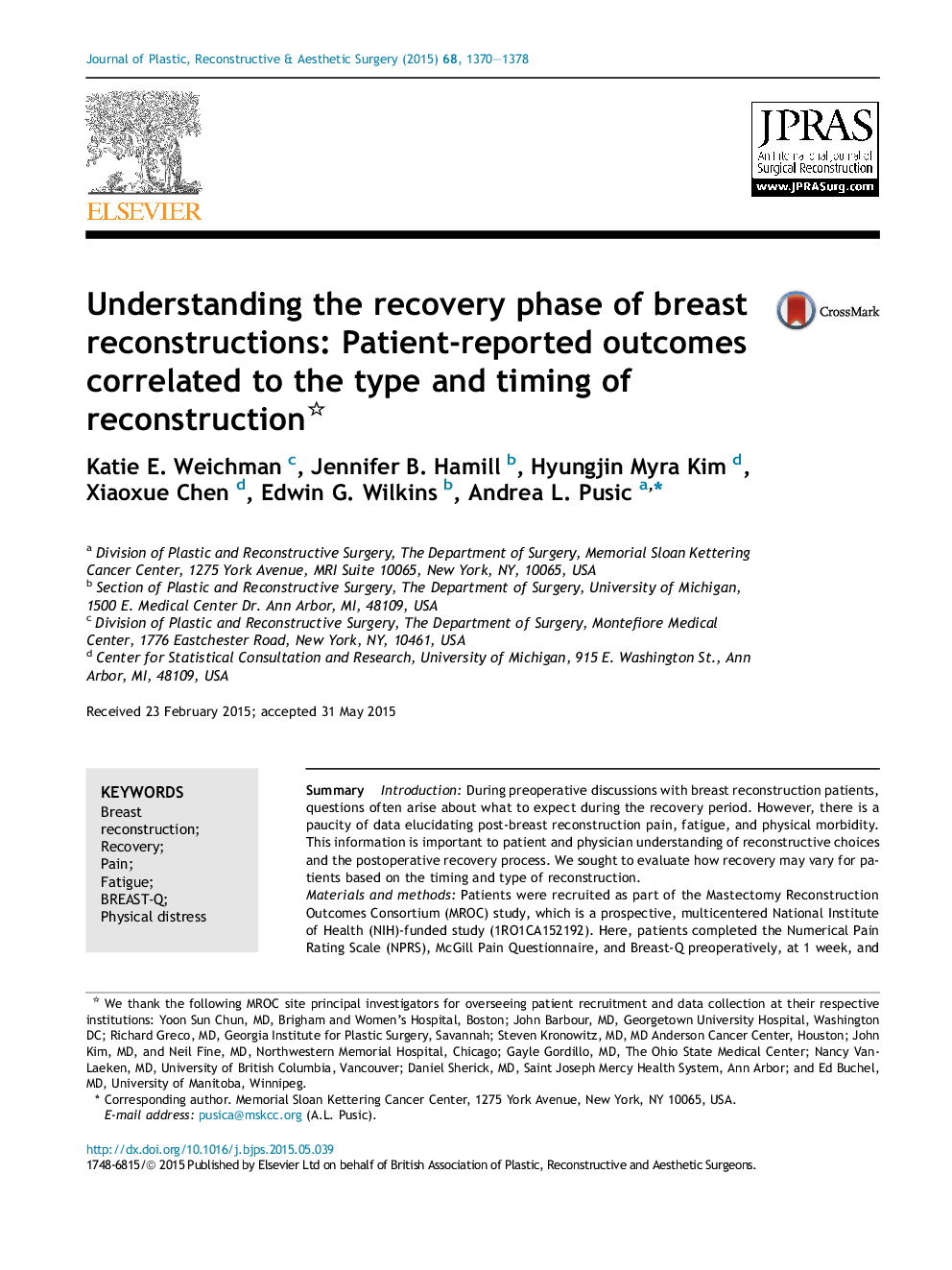| کد مقاله | کد نشریه | سال انتشار | مقاله انگلیسی | نسخه تمام متن |
|---|---|---|---|---|
| 4117684 | 1270313 | 2015 | 9 صفحه PDF | دانلود رایگان |
SummaryIntroductionDuring preoperative discussions with breast reconstruction patients, questions often arise about what to expect during the recovery period. However, there is a paucity of data elucidating post-breast reconstruction pain, fatigue, and physical morbidity. This information is important to patient and physician understanding of reconstructive choices and the postoperative recovery process. We sought to evaluate how recovery may vary for patients based on the timing and type of reconstruction.Materials and methodsPatients were recruited as part of the Mastectomy Reconstruction Outcomes Consortium (MROC) study, which is a prospective, multicentered National Institute of Health (NIH)-funded study (1RO1CA152192). Here, patients completed the Numerical Pain Rating Scale (NPRS), McGill Pain Questionnaire, and Breast-Q preoperatively, at 1 week, and 3 months postoperatively. Pain, fatigue, and upper body morbidity were evaluated by the type and timing of reconstruction.ResultsA total of 2013 MROC study participants had completed a 3-month follow-up, and therefore they were included for the analysis. A total of 1583 (78.6%) and 1517 patients (75.3%) completed surveys at 1 week and 3 months, respectively, post reconstruction. Across all procedure groups, fatigue and physical well-being scores did not return to preoperative levels by 3 months. At 3 months, pain measured by the NPRS differed across procedure types (P = 0.01), with tissue expander/implant (TE/I) having more pain than direct to implant (P < 0.01). Similarly, at 3 months, chest and upper body physical morbidity, as measured by BREAST-Q, differed by procedure types (P < 0.001), with generally less morbidity for autologous reconstruction as compared with TE/Is.ConclusionsFor all reconstructive procedure groups, patients did not fully recover at 3 months post surgery. In addition, postoperative pain and upper body physical morbidity vary significantly by reconstructive procedure with patients undergoing TE/I reporting the most distress.
Journal: Journal of Plastic, Reconstructive & Aesthetic Surgery - Volume 68, Issue 10, October 2015, Pages 1370–1378
